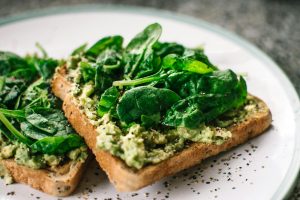12 Ingredients You Should Avoid if You Have Food Allergies

Food allergies affect millions of people worldwide, and managing them involves careful avoidance of specific ingredients that can trigger an allergic reaction. For those with food allergies, even trace amounts of certain allergens can cause symptoms ranging from mild discomfort to severe, life-threatening anaphylaxis. This makes it crucial to be well-informed about which ingredients are commonly associated with allergies and how they can be hidden in everyday foods. In this comprehensive guide, we’ll explore 12 ingredients that individuals with food allergies should avoid, as well as where these allergens are commonly found, and tips on how to safely navigate around them in your diet.
1. Peanuts
Peanut allergies are one of the most common and potentially life-threatening food allergies, particularly in children, although they can persist into adulthood. An allergic reaction to peanuts can be triggered by even a tiny amount, making vigilance in avoiding peanut products crucial. Peanuts are often found in snacks, candies, baked goods, and many processed foods. It’s also important to be aware of cross-contamination in food manufacturing facilities that process peanuts alongside other ingredients.
Peanut derivatives, such as peanut oil or peanut flour, can also pose a risk, and products like Asian cuisine and sauces (e.g., satay sauce) frequently contain peanuts. Be sure to look for terms like “arachis oil,” which is another name for peanut oil, on ingredient lists.
Avoid:
- Peanut butter, peanut oil, and peanut flour.
- Packaged snacks and baked goods, like cookies or granola bars.
- Asian and African dishes that commonly use peanuts as a base ingredient.
Alternatives:
- Nut-free butters made from sunflower seeds, soy, or chickpeas.
- “Peanut-free” certified snacks, candies, and treats.
2. Tree Nuts
Tree nut allergies, which include nuts such as almonds, cashews, walnuts, pistachios, hazelnuts, and Brazil nuts, are another highly common and serious food allergy. People with tree nut allergies need to avoid both whole nuts and any products containing tree nut ingredients, including oils, butters, and flavorings. Tree nuts are widely used in processed foods, chocolates, sauces, and baked goods.
Tree nut oils, such as almond oil or walnut oil, are often used in cooking, and even small traces of these can cause severe allergic reactions. Additionally, cross-contamination is a significant risk, particularly in facilities that process both tree nuts and other foods.
Avoid:
- Nut butters, like almond butter or cashew butter.
- Baked goods, such as cakes, cookies, and pastries.
- Ice creams and chocolates.
- Granola, muesli, and trail mixes.
Alternatives:
- Seed-based alternatives, such as sunflower seeds or sesame seeds.
- Seed butters, such as sunflower seed butter or tahini.
3. Milk
Milk allergies, distinct from lactose intolerance, occur when the immune system reacts to the proteins in milk, such as casein or whey. Milk is one of the most common allergens, particularly in children, though some individuals may carry the allergy into adulthood. People with a milk allergy must avoid not only milk itself but also all dairy products, including cheese, yogurt, butter, cream, and ice cream. Milk can also be found as an additive in many processed foods, such as breads, cereals, soups, and salad dressings.
It’s important to check food labels for terms like “whey,” “casein,” or “lactose,” which indicate the presence of milk derivatives. Even products labeled as “non-dairy” may still contain small amounts of milk protein, so it’s crucial to check ingredient lists thoroughly.
Avoid
- Dairy products, including milk, cheese, yogurt, cream, and butter.
- Baked goods, such as bread and cakes.
- Packaged foods like soups, sauces, and dressings.
- Milk-based desserts like ice cream and custards.
Alternatives:
- Plant-based milk alternatives, such as almond milk, soy milk, or oat milk.
- Vegan cheese, butter, and yogurt made from plant-based ingredients.
4. Eggs
Egg allergies are particularly common in young children, though many outgrow them by adolescence. For individuals with an egg allergy, both the egg whites and yolks must be avoided, as they can trigger allergic reactions. Eggs are used in a wide variety of foods, from baked goods to sauces, and can often be hidden in processed foods. Egg proteins are also frequently used in binding or emulsifying agents in foods like mayonnaise, dressings, and sauces.
It’s crucial to check for egg derivatives in ingredient lists, as terms like “albumin” or “ovalbumin” refer to egg proteins often used in processed foods. Eggs are not only found in traditional breakfast dishes like scrambled eggs and omelets but also in many prepared foods where you might not expect them, such as certain types of pasta or pre-packaged meals.
Avoid:
- Baked goods like cakes, cookies, muffins, and pastries.
- Dressings, mayonnaise, and sauces (e.g., hollandaise or aioli).
- Some types of pasta and noodles.
- Pre-packaged or frozen meals, processed meats, and meat substitutes.
Alternatives:
- Egg replacements for baking, such as applesauce, mashed bananas, or commercial egg replacers.
- Vegan-friendly substitutes like flaxseed or chia seed gels for binding purposes.
5. Wheat
Wheat is one of the top allergens, and wheat allergy is distinct from celiac disease, which involves an autoimmune reaction to gluten. Wheat allergies involve a direct immune response to proteins found in wheat, such as gluten, albumin, or globulin. This allergy can be triggered by consuming wheat in any form, including in bread, pasta, cereal, and processed foods like sauces and gravies that use wheat as a thickener. For individuals with a wheat allergy, even trace amounts of wheat can cause symptoms ranging from mild hives to severe anaphylaxis.
Wheat can be hidden in products under various names like “hydrolyzed wheat protein,” and wheat-based additives are common in many foods, so it’s essential to carefully examine food labels.
Avoid:
- Baked goods, including bread, pastries, and crackers.
- Pasta, noodles, and many breakfast cereals.
- Soy sauce, soups, sauces, and gravies.
- Processed meats and snack foods.
Alternatives:
- Gluten-free grains and flours, such as rice, quinoa, buckwheat, or corn.
- Wheat-free bread, pasta, and snacks labeled as gluten-free or wheat-free.
6. Soy
Soy allergies are more common in children, but they can also persist into adulthood. Soybeans and soy-based products are found in many processed foods, including sauces, meat substitutes, and baked goods. Soy is a common ingredient in vegetarian and vegan foods, but it’s also used in a wide variety of other products, from soy sauce and tofu to soy lecithin, which is often used as an emulsifier in processed foods.
Individuals with soy allergies must avoid both obvious soy products, such as soy milk and tofu, and less obvious sources like soy protein isolate, hydrolyzed soy protein, and soy-based additives in processed foods.
Avoid:
- Soy milk, tofu, tempeh, and other soy-based meat substitutes.
- Soy sauce, miso, and edamame.
- Processed foods, including cereals, baked goods, and snack foods.
- Protein bars, shakes, and supplements.
Alternatives:
- Dairy-free and soy-free milk alternatives like almond, coconut, or oat milk.
- Plant-based protein options that do not contain soy, such as pea protein or lentils.
7. Fish
Fish allergies are typically lifelong and can be severe, causing serious reactions like anaphylaxis. Individuals with a fish allergy need to avoid all types of fish, including both freshwater and saltwater varieties, such as salmon, tuna, cod, and haddock. Fish is a common ingredient in many dishes, including seafood soups, sauces, and sushi, as well as certain types of supplements like fish oil. Cross-contamination is a concern, especially in restaurants where fish is prepared.
Fish ingredients can be listed under terms like “anchovy,” “fish sauce,” or “omega-3 fatty acids” in processed foods and supplements. Checking labels carefully is essential for avoiding exposure.
Avoid:
- Fish and seafood dishes, including sushi, ceviche, and grilled fish.
- Sauces like Worcestershire sauce or Caesar salad dressing (often containing anchovies).
- Fish oil supplements, which are often used for omega-3 fatty acids.
Alternatives:
- Plant-based sources of omega-3 fatty acids, such as flaxseeds, chia seeds, or algae oil.
- Seafood alternatives made from plant-based ingredients, often labeled “vegan seafood.”
8. Shellfish
Shellfish allergies are common in adults and can be triggered by both crustaceans (e.g., shrimp, lobster, crab) and mollusks (e.g., clams, oysters, mussels). Shellfish allergies can be severe and are often lifelong. Cross-contamination is a major concern, especially in seafood restaurants or during the preparation of foods where shellfish are cooked alongside non-allergenic ingredients.
Shellfish can sometimes be hidden in sauces or flavorings, particularly in Asian cuisine. Avoiding terms like “crustacean extract” or “mollusk” on ingredient labels is critical for those with shellfish allergies.
Avoid:
- Seafood dishes, such as shrimp cocktails, lobster rolls, or crab cakes.
- Asian dishes, such as soups, sauces, and stir-fries, that may use shrimp or shellfish-based broths.
- Certain fish sauces or bouillons, which may contain shellfish-derived ingredients.
Alternatives:
- Plant-based seafood alternatives that mimic the texture and flavor of shellfish.
- Seaweed or algae-based products for a seafood-like flavor without the allergens.
9. Gluten
Gluten is a protein found in wheat, barley, and rye, and it is a major concern for individuals with celiac disease or non-celiac gluten sensitivity. Gluten triggers an immune response in people with celiac disease, damaging the small intestine and leading to malabsorption of nutrients. Gluten can also cause digestive discomfort and other symptoms in those with non-celiac gluten sensitivity.
Gluten is found in a wide variety of foods, including breads, pastas, cereals, and many processed foods. It can also be hidden in sauces, soups, and seasonings as a thickening agent or flavor enhancer.
Avoid:
- Baked goods made from wheat, barley, or rye, such as bread, pastries, and cookies.
- Pasta, cereal, and pizza crusts made with wheat flour.
- Soups, sauces, and gravies that use wheat as a thickener.
Alternatives:
- Gluten-free grains such as rice, quinoa, amaranth, and buckwheat.
- Gluten-free breads, pastas, and cereals made with alternative flours like almond, rice, or coconut flour.
10. Sesame
Sesame allergies are becoming increasingly recognized as a common allergen, particularly in countries where sesame seeds are frequently used in cooking. Sesame seeds, sesame oil, and tahini (a sesame paste) are used in many dishes, especially in Middle Eastern and Asian cuisines. Individuals with a sesame allergy must avoid both sesame seeds and sesame oil, which can cause reactions even in small amounts.
Sesame can be hidden in foods under names like “benne,” “gingelly oil,” or “til,” making it important to read ingredient labels carefully.
Avoid:
- Breads and baked goods with sesame seeds or sesame oil.
- Tahini and hummus, which often contain sesame as a primary ingredient.
- Middle Eastern and Asian dishes, including sesame-based sauces and marinades.
Alternatives:
- Seed and nut-free spreads and oils like sunflower seed butter or olive oil.
- Sesame-free hummus and dips made from alternative ingredients.
11. Mustard
Mustard allergies, though less common, can cause significant allergic reactions in some people. Mustard seeds and mustard-based products, such as mustard powder and mustard oil, are often used in condiments and prepared foods. Mustard is commonly found in processed meats, salad dressings, sauces, and pickles.
It’s important to avoid all forms of mustard, including Dijon mustard, yellow mustard, and mustard powder, which are frequently used as flavor enhancers in various recipes.
Avoid:
- Salad dressings, sauces, and marinades that use mustard for flavor.
- Prepared meats, sausages, or pickled products.
- Mustard-based condiments used in sandwiches, hot dogs, and burgers.
Alternatives:
- Mustard-free condiments like mayonnaise, ketchup, or homemade dressings made from mustard-free ingredients.
12. Corn
Corn allergies, while relatively rare, do exist and can be difficult to manage because corn and corn derivatives are found in many processed foods. Corn is used in various forms, including cornmeal, cornstarch, corn syrup, and high-fructose corn syrup, making it a hidden allergen in many packaged and processed foods.
Corn can be found in everything from cereals and snack foods to sodas and candies. It’s important to read ingredient labels closely to avoid all forms of corn, especially if you are highly sensitive.
Avoid:
- Processed foods like chips, cereals, and snacks that contain cornmeal or corn flour.
- Sauces, soups, and gravies thickened with cornstarch.
- Sweeteners like corn syrup or high-fructose corn syrup used in sodas and candies.
Alternatives:
- Corn-free starches and flours, such as potato starch, tapioca flour, or arrowroot powder.
- Foods and snacks made from non-corn ingredients, such as rice or cassava.
Conclusion
For individuals with food allergies, avoiding these 12 common allergens is crucial for preventing allergic reactions and maintaining overall health. While food allergies can make grocery shopping and meal preparation more challenging, knowing what ingredients to look out for and seeking out safe alternatives can help manage these conditions effectively. Always read food labels carefully, ask about ingredients when dining out, and consult with a healthcare professional or allergist if you suspect a food allergy.



